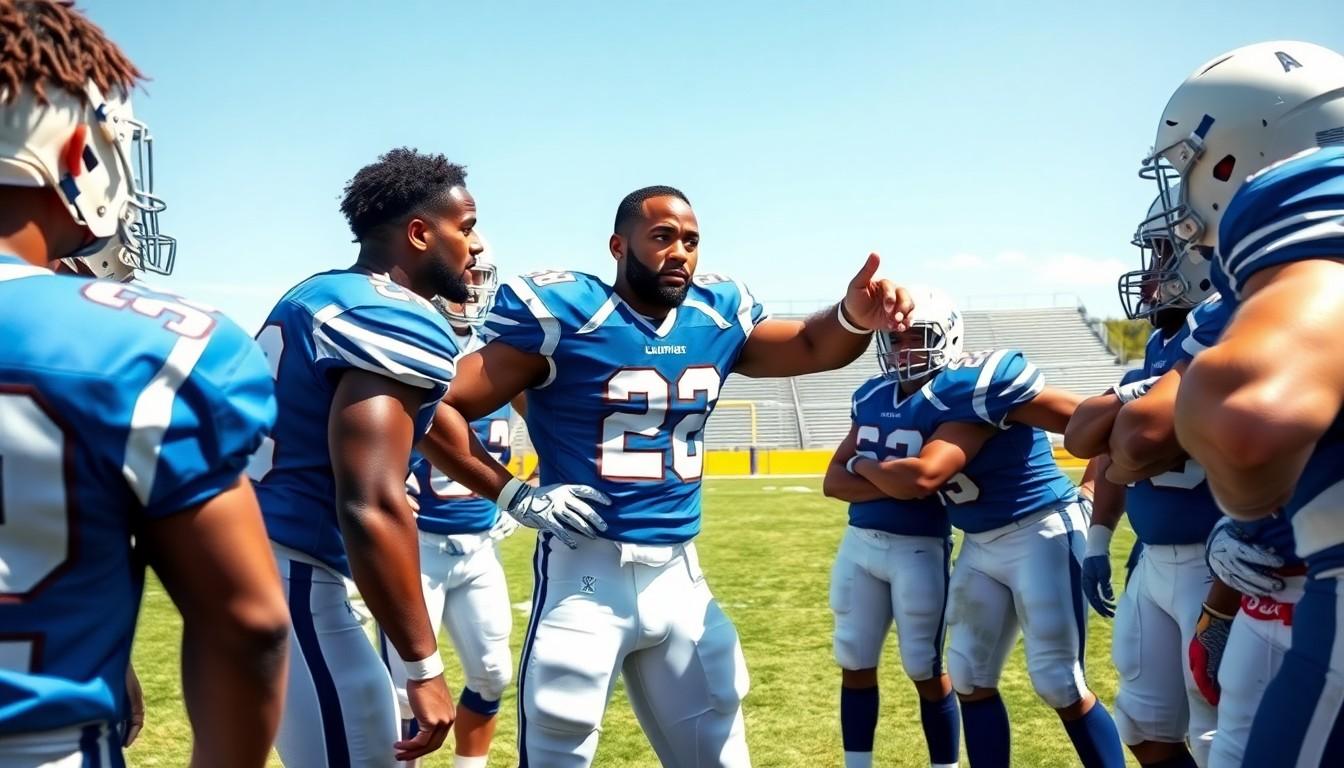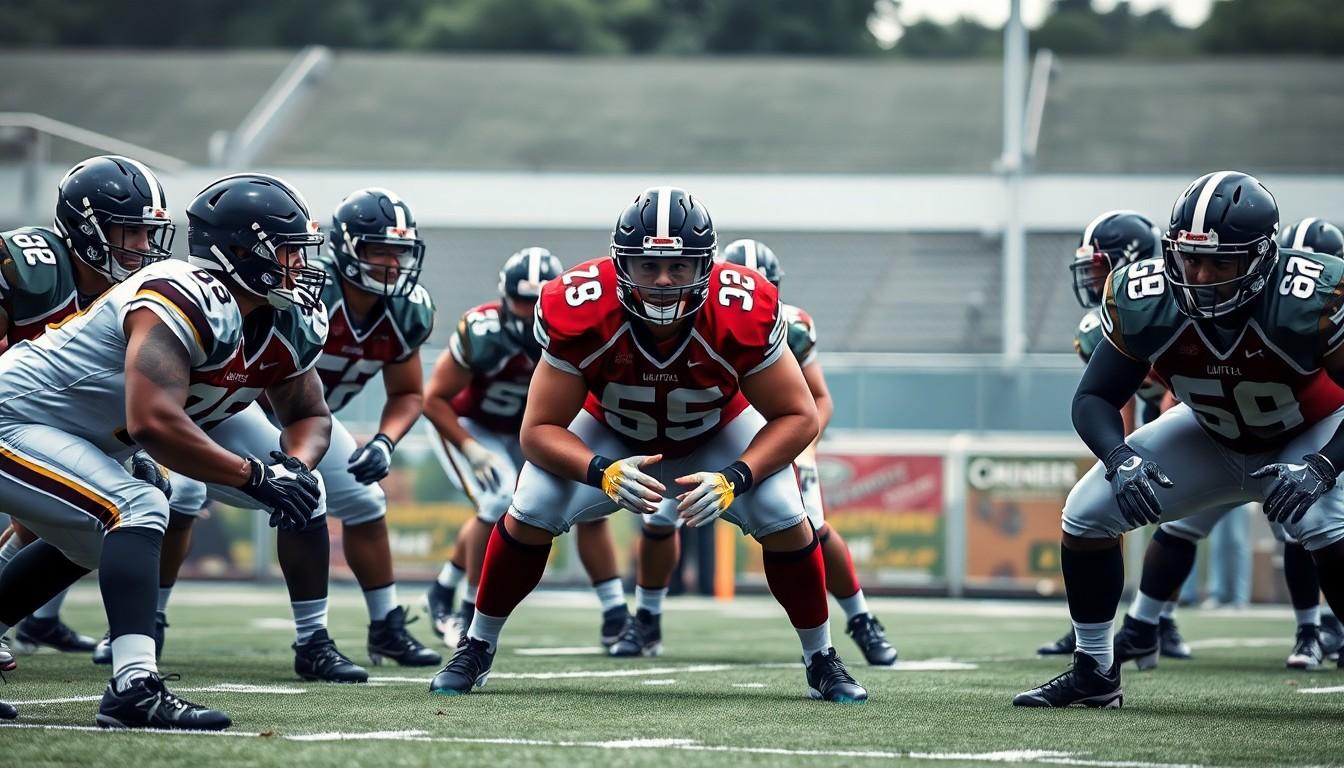Phone:
(701)814-6992
Physical address:
6296 Donnelly Plaza
Ratkeville, Bahamas.

In the world of football, defensive strategies can make or break a game. One of the most effective yet often misunderstood tactics is match quarters coverage. Imagine a defense that’s not just reacting but anticipating the offense’s every move, like a chess master three steps ahead. This coverage scheme turns defenders into mind readers, allowing them to lock onto their assigned receivers while still maintaining the flexibility to respond to changing dynamics on the field.
Match quarters coverage represents a strategic defensive scheme in football. This tactic enhances defenders’ performance by improving their ability to read the offense and react swiftly.
Match quarters coverage involves dividing the field into quarters, assigning responsibilities to defenders based on receiver patterns. Each defender focuses on their designated area yet remains aware of developments in other zones. The main purpose of this scheme is to create a balance between man-to-man and zone coverage. By anticipating potential plays, defenders can adjust their positions accordingly. This adaptability enables teams to counteract various offensive strategies while maintaining coverage integrity.
Key features of match quarters coverage include specific assignments, communication, and versatility. Each defender holds responsibility for a particular receiver but also monitors nearby threats. Effective communication between defensive players fosters quick adjustments during plays. Versatility allows defenders to switch between man and zone responsibilities based on offensive movements. Additionally, linebacker involvement often plays a crucial role in maintaining coverage over running backs or tight ends. This coverage scheme’s adaptability can significantly influence a team’s defensive success, keeping offenses guessing throughout the game.

Match quarters coverage functions on specific structural principles that enable effective defensive play. Game dynamics control how defenders respond to receiver movements. This method divides the field into quarters, assigning specific zones to each defender while allowing them to adjust based on offensive routes.
Flexibility defines the essence of match quarters coverage. Adjustments occur as defenders track offensive players, leading to a seamless blend of zone and man-to-man strategies. Each defensive back monitors their assigned area but can switch focus based on receiver patterns. Simultaneously, the linebackers maintain responsibility for running backs and tight ends. This interconnectedness allows for quick adaptations during plays, creating a robust defensive scheme. Communication among players strengthens their ability to recognize trends and shifts in the offense, enhancing overall performance.
Each player within match quarters coverage has distinct roles, ensuring efficiency in execution. Cornerbacks guard wide receivers by following them closely, maintaining tight coverage. Safeties oversee the deeper areas, providing support for cornerbacks when routes break into their zones. Linebackers remain vigilant, watching for running plays and short passes directed at tight ends or running backs. Each defender recognizes their zone while remaining aware of potential threats entering adjacent zones. This clear delineation of duties allows for teamwork and collective success, crucial for countering various offensive strategies.
Match quarters coverage presents significant advantages for defensive teams. It allows players to adaptively respond to offensive strategies, creating a dynamic defensive front.
Flexibility stands out as a hallmark of match quarters coverage. Defenders can switch between man-to-man and zone assignments seamlessly. Cornerbacks focus on specific wide receivers while safeties ensure coverage over deeper threats. This hybrid approach enhances overall responsiveness, enabling teams to counter various offensive formations effectively. Linebackers, tasked with monitoring running backs and tight ends, contribute to the adaptability of the scheme. Greater versatility often leads to improved defensive performance, as players adjust to real-time changes on the field.
Zone coverage benefits considerably from the structure of match quarters. Defenders maintain designated areas, offering comprehensive coverage of the field. Receivers entering these zones trigger immediate responses from defenders, ensuring no passage goes unchecked. Communication among teammates supports this synergy, allowing quick adjustments during plays. The layered zones work together, providing depth and support against offensive threats. Players maximize their awareness of field dynamics, making it harder for offenses to exploit gaps. Heightened efficiency in zone coverage results in fewer completions and reduced yards after the catch, making it a pivotal element of defensive strategy.
Match quarters coverage, while effective, presents certain drawbacks. Defenders may encounter potential vulnerabilities during gameplay that can be exploited by skilled offenses.
One vulnerability arises during miscommunication among defenders, leading to blown coverages and wide-open receivers. Defenders can struggle against quick, agile route runners who exploit soft spots in zone coverage. Inconsistent execution from defenders may leave gaps, allowing offenses to capitalize on mismatches. Breakdown in assignments can result in confusion, undermining the effectiveness of this coverage scheme. For instance, receivers running crossing routes can create separation, which strains defensive integrity. Such lapses highlight the importance of strong communication and discipline within the defensive unit.
Situationally, match quarters coverage can falter against certain offensive schemes. Against high-tempo offenses, defenders may struggle to align quickly and adjust their responsibilities. Exploitation of short-yardage or goal-line situations can occur, as defenders might prioritize coverage over tackling. An offense utilizing heavy play-action can confuse defenders, causing them to abandon their assignments in search of potential ball carriers. While adaptability is a strength of this coverage, specific formations may reduce its overall effectiveness. Furthermore, isolated mismatches can undermine the balance between zone and man responsibilities, leading to potential scoring opportunities for the offense.
Match quarters coverage stands out as a strategic defensive approach that enhances a team’s ability to counteract offensive plays. Its unique blend of man-to-man and zone principles allows defenders to adapt fluidly to various situations on the field. By fostering strong communication and clear assignments, teams can maximize their defensive efficiency and minimize the risk of big plays.
While there are challenges associated with this coverage scheme, such as potential miscommunication and vulnerabilities against fast-paced offenses, the benefits often outweigh the risks. A well-executed match quarters coverage can keep offenses on their toes and create opportunities for turnovers. As teams continue to refine their defensive strategies, match quarters coverage will remain a vital component in the ever-evolving landscape of football.